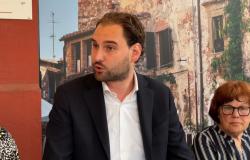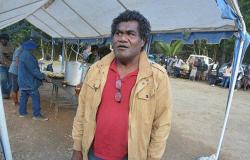Vieux Lille, Lille’s old town, is a place of whimsical Flemish facades. Where bars, bistros, boutiques and shops line the cobbled streets that wind like a maze around the central Place du Général de Gaulle, known as the Grand’Place.
Outdoor cafes abound in the ancient city center, artwork of all kinds adorns the streets, and you could visit a different museum in and around Lille every day for two weeks and still not see them all.
The former capital of culture is vibrant, lively and both cultured and urban. Lille has undergone a metamorphosis from a former industrial centre to a rather run-down stage to emerge as a top destination for city breaks and one of Europe’s most fascinating cities…
Lille – A treat for all the senses
Here’s where to treat yourself to a feast for the senses. Here are some of the best cultural sites and restaurants nearby – feed your soul and your stomach!
Culture: Palace of Fine Arts
The Palais des Beaux Arts is aptly named, it is truly a grand palace and one of the greatest museums in France. It has the second largest collection of fine art outside of Paris with exhibits ranging from antiquity to contemporary, taking in all the greats from Rubens, Goya and Monet to Van Gogh, Picasso and Chagall. Head downstairs to discover a unique collection of old relief maps, fourteen exact replicas of miniature models of cities such as Ypres in Belgium (it served as a model for the reconstruction of Ypres after World War II) and Lille. They were once used by Louis XIV and his famous martial engineer Vauban to plan military tactics. Regular world-class temporary exhibitions are held and innovative touchscreens (including gigapixels) help visitors explore the artworks.
Eat: At the Moulin d’Or
Au Moulin d’Or is located a stone’s throw away, in the heart of Old Lille, in a former lingerie boutique. Classified as a historic monument, this restaurant was used in the Dany Boon film “Bienvenue chez les Ch’tis”, the highest-grossing French film of all time. It has been brilliantly renovated. Glittering chandeliers, superb central staircase, and regularly highlights local artists. Upstairs or on the ground floor, pleasant atmosphere and classic, delicious brasserie menu.
Culture: Museum of the Hospice of the Countess
The Countess Hospice Museum is full of history. It was founded in 1236 by Joan, Countess of Flanders to care for the poor and sick. Don’t miss the magnificent painting in the Baroque chapel depicting Jeanne and her sister Marguerite giving money to the nuns of the hospice. The oldest part of the building dates from the 1400s. It includes beautifully furnished rooms depicting Flemish life from the 15th to 17th centuries. My favorites were a charming 17th century kitchen with beautiful blue and white Delft tiles and a linen room with a perfectly preserved 17th century wine press. There is a fascinating collection of paintings and antiques and regular exhibitions dedicated to the history of Lille. It’s a charming museum with an authentic atmosphere – a must-see.
Eat: Antwerp Barbue
A few steps away, in an alley behind a pretty courtyard, in a magnificent 16th century Flemish building, hides a local legend. It serves regional specialties such as Flemish carbonnade, a rich and hearty beef stew with beer and brown sugar. And the unpronounceable potjevleesch, a dish of three cold meats (traditionally rabbit, chicken and veal) in jelly. Without forgetting the waterzooi, a kind of chicken soup. The dining room is charming and vintage, with candles, books and trinkets galore. Locals love this original restaurant with its warm atmosphere.
Culture: Saint Sauveur Station
One of the things I love about Lille is the way abandoned but spectacular buildings are transformed into cultural venues. Saint-Sauveur Station, a former freight station built in 1861, is today a space of inspiration where events, art exhibitions and performances regularly take place. It houses a cinema, a bar and a restaurant, gardens and a pop-up bar in summer. The huge warehouses are perfect for displaying works of art. I loved how the train tracks were still in place, a reminder of the past fixed in the present. It is also one of the main venues for Lille3000, the legendary 9-month triennial arts festival that takes place on the streets and public buildings of the city of Lille and surrounding neighborhoods.
Eat: Bistrot de Saint So
Le Bistrot de Saint So is part of the Saint-Sauveur train station complex and is a great way to mix art and food. After you have finished feasting on the works of art of the old station, head to the very chic restaurant and enjoy some very good dishes. This place is very popular with locals for lunch (Wednesday to Sunday), so be sure to book in advance on their Facebook page. Enjoy dinner on the fabulous large terrace watched over by a giant baby with a tail, or in the chic interior. I’m not sure the food will make your hair “sparkle” like they claim (with a big smile) but with incredibly tasty salads and a seasonal menu, I think they’re right! It is also open on Thursday, Friday and Saturday evenings for a trendy musical evening with a DJ. There are also live performances. And really funky cocktails. facebook.com/bistrotdestso
Culture: Old Stock Exchange
Meet at the Vieille Bourse, the old market square, built in 1623. The courtyard hosts a second-hand book market (Tuesday to Sunday, in the afternoon) on stands under an arched walkway, the along walls lined with fabulous friezes and carved sculptures. If you’re there on a Sunday evening in summer, take part in a tango dance under the stars.
Eat: The Chefs’ Workshop
Cook your lunch or dinner with a chef. At L’Atelier des Chefs in Lille, you’ll improve your skills by creating a classic dish from scratch in just 30 minutes. Then, enjoy your masterpiece in this fun cooking school. Ideal for individuals, couples and friends. Lunchtime cooking class €17; gourmet dinner class (one hour) where you’ll prepare a main course and dessert €38. Advance booking is essential.
Culture : Tripostale
Located in the old postal sorting office, it is neither a museum nor an art center but a place of art and life, say the staff. Temporary exhibitions, performances and workshops are organized in this dynamic and exciting cultural venue.
Eat: Coke
Coke Restaurant is housed in the former offices of the former Compagnie des Mines de Lens, hence its name. It is a majestic building designed by architect Louis-Marie Cordonnier. Upstairs, an elegant dining room with chandeliers. The ground floor is modern and artistic, and a retractable glass roof makes it ideal for sunny days. Bold, playful and clever cuisine is on the menu from a talented team working in a glass kitchen. It is also a great place for an aperitif with a chic cocktail bar and music on Friday nights.
Culture: The Swimming Pool & Street art Roubaix
A short tram or metro ride from Lille, La Piscine, Roubaix’s art deco swimming pool turned museum with a world-class collection, is one of the most popular museums in France. Learn more here.
Roubaix has street art superstar status with an annual urban art festival (#XU), fabulous murals and two amazing studios dedicated to urban culture. Atelier RemyCo has 15 artists in residence including well-known names (Mr. Voul and Freaks the Fab). L’Atelier Jouret welcomes 40 artists: painters, sculptors, fashion designers… The first Sunday of each month, you can visit the workshops, meet the artists and buy something unique among these must-haves of urban art . Learn more about Roubaix and its extraordinary artists.
Eat: Meert at the Pool
Meert is famous for their jewel-like pastries and the most indulgent waffles ever made. They’ve been making sweet treats since 1761 and their famous shop in Lille will take you back in time. They also have a beautiful art deco tea room and restaurant with a gorgeous terrace garden (perfect for sunny lunches) at La Piscine museum in Roubaix. The menu reflects the world-famous exhibitions and really adds a little je ne sais quoi to your visit. The chef works with curators to design unique menus. There are dishes inspired by the themes of the exhibitions (and there’s also a classic seasonal French menu). Save room for one of their famous sweet waffles. You’ll be in good company, they were created for the Belgian King Leopold I!
Culture: MUBA Eugène Leroy
In the Tourcoing district, on the outskirts of Lille, the Musée des Beaux-Arts has an excellent and important permanent collection from the 17th to the 20th century.
Eating: The Paradox
Le Paradoxe is almost next to the museum. It’s a really funky restaurant located in the old hospice that dates back to the 13th century.
Find more things to do on the Lille Tourist Office website and on UKFrancefr





